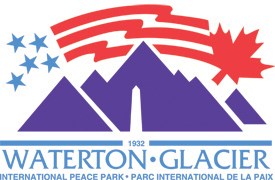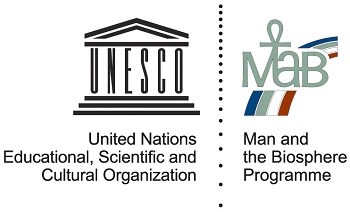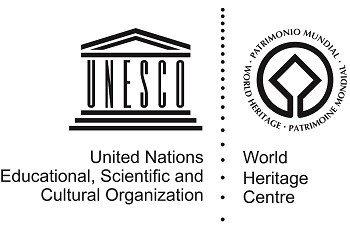|
Glacier is a special place to many people. It is a national park and biosphere reserve. Together with Waterton Lakes National Park it is the world’s first international peace park and a world heritage site. No other place in America has those four designations. These designations reflect the fact Waterton-Glacier provides an outstanding opportunity for ecological management and research in one of the most ecologically intact areas remaining in the temperate regions of the world. Waterton-Glacier lies at the core of the transboundary Crown of the Continent ecosystem. Due to wide variations in elevation, climate, and soil, five distinct vegetation zones have produced strikingly diverse habitats that sustain plant and animal populations, including threatened and endangered, rare, and sensitive species. Waterton-Glacier’s cultural resources chronicle the history of human activities that show that people have long placed high value on the area’s natural features. 
Waterton-Glacier International Peace Park Glacier National Park and Waterton Lakes National Park together comprise the world’s first international peace park, where both countries cooperate peacefully to resolve controversial natural resource issues that transcend international boundaries. We support the efforts of Parks Canada to educate visitors and residents about the values of the international peace park, the world heritage site, and the biosphere reserve program. In 1932, through the work of the Rotary Clubs of Alberta and Montana and Rotary International, the Canadian Parliament and the United States Congress designated Waterton Lakes and Glacier National Parks as units of Waterton-Glacier International Peace Park. The designation was established to foster the long relationship of peace and goodwill between Canada and the United States. The peace park today illustrates the need for cooperation in a world of scarce but shared resources. It is a symbol of the peace shared by two great nations and serves as an example for other countries whose borders straddle the world’s special wild places. The two national parks, their international designations and recognition, and the magnificent natural and heritage resources shared by the peace park region offer an opportunity for the two countries to promote and encourage environmental stewardship as these resources become more affected by climate change. By encouraging employees’ and visitors’ greater understanding of each country’s national park mission and heritage values and the common purpose of both countries, the international peace park can be an example to all nations that share scarce natural resources or the heritage of humankind across their boundaries. And by doing so peacefully, Glacier and Waterton Lakes together can model behavior that may help secure for future generations the bounty and promise of the remaining wild places on earth to all peoples. 
Biosphere Reserve In 1976, Glacier National Park was designated as a biosphere reserve under the Man and the Biosphere Programme of the United Nations Educational, Scientific, and Cultural Organization (UNESCO). The designation says, in part, that a reason for the park’s biosphere reserve status is “to conserve for present and future human use the diversity and integrity of biotic communities and to safeguard the genetic diversity of species” and to “provide areas for ecological research, including baseline studies both within and adjacent to Glacier.” This language lends greater depth and support to park themes of preservation, research, education, and human use. The Waterton Biosphere Reserve was designated three later and includes Waterton Lakes National Park. The two main tenets of the Man and Biosphere Programme are the preservation of the core natural values and encouraging a sustainable area economy that will protect those values. Glacier will continue to work and cooperate with park neighbors and owners of adjacent lands to carry out the tenets of these programs. The National Park Service places particular research emphasis on conserving biodiversity and genetic resources, on detecting ecosystem change, and on research that could be applicable to biosphere reserves in other regions of the world. 
World Heritage Site In 1995, Waterton-Glacier International Peace Park was designated as an UNESCO world heritage site by the Convention Concerning the Protection of the World Cultural and Natural Heritage. Waterton-Glacier met all criteria established for natural area nominations, and its designation as a world heritage site recognizes Waterton-Glacier as an area of outstanding universal value to people throughout the world. The designation of Waterton-Glacier provides greater protection for resources because Canada and the United States have agreed through the ratification of the world heritage treaty to refrain from taking actions that might damage the values of the other country’s world heritage site. They have also each agreed to take the measures necessary within their own laws to protect their own sites. Resource impacts that may become issues for both parks include management of endangered species and wildlife, natural fire management, mineral development, air quality, use of water resources, and increasing levels of visitor use. 
International Dark Sky ParkIn 2017, Glacier National Park and its sister park Waterton Lakes National Park of Canada were designated an International Dark Sky Park by the International Dark Sky Association (IDA). This is the first IDA designation in the world to cross an international border. The designation requires a long-term commitment to preserving dark skies and requires the parks to meet specific objectives. These include preservation or restoration of outstanding night skies, protection of nocturnal habitat, public enjoyment of the night sky and its heritage, and demonstrating environmental leadership on dark sky issues by communicating the importance of dark skies to the general public and surrounding communities, and by providing an example of what is possible. |
Last updated: February 11, 2019
